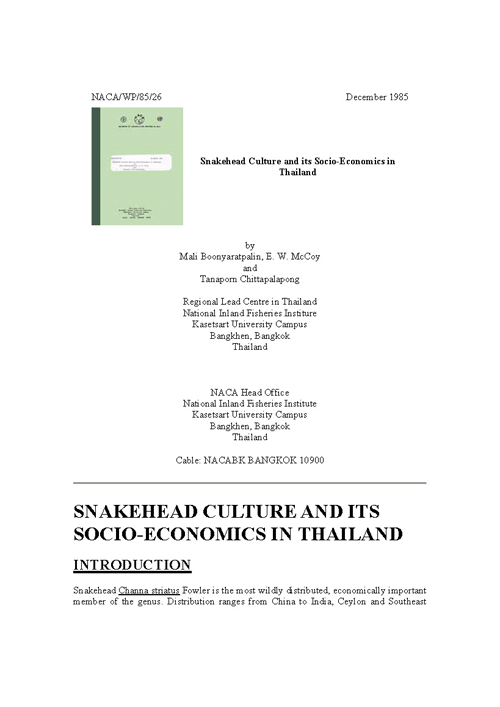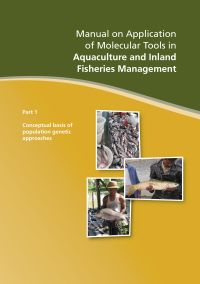Snakehead culture and its socio-economics in Thailand
1 December 1985 | Mali Boonyaratpalin, E.W. McCoy and Tanaporn Chittapalapong | 1323 Downloads | .pdf | 194.65 KB | Freshwater finfish, Markets and trade, Thailand
Snakehead Channa striatus is the most wildly distributed, economically important member of the genus. Distribution ranges from China to India, Ceylon and Southeast Asia, in rivers, lakes, swamps, marshes, canals and ponds. In Thailand it is found throughout the country, except in the mountain region, (Smith 1945). It is one of the most common staple food fish in Thailand and other parts of Southeast Asia and regarded by the Chinese as a food fish for healing wounds.
Culture of snakehead has been in practice in Thailand for about 10 years in the central and eastern parts of the country. Culture has expanded rapidly in the last five years, replacing Clarias (catfish) farming as a result of the latter's disease problems and fluctuating prices. Estimates made in 1981 by Fisheries Statistics Section, Department of Fisheries, Ministry of Agriculture and Cooperatives indicated annual pond culture production of 7,255.56 tons valued at 244,396,060 baht (21.5 baht= 1 U.S.$ in 1981).
Creative Commons Attribution.

